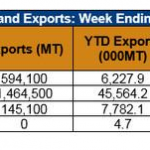Understanding Your Property Rights—As any landowner will tell you, the threat of being legally liable for someone else’s actions on their property – whether the person was invited or trespassing – often weighs on their mind. Eighty percent of Texas land is privately owned, meaning it’s important for everyone to understand their property rights. Take, for instance, the recent Texas Supreme Court case Boerjan v Rodriguez. In it, a “coyote” (a specific kind of transportation for illegal immigrants) was illegally trespassing across a private ranch in South Texas when they were stopped by a ranch employee. The coyote fled, the employee and crashed his car in the process, resulting in the death of the family of immigrants being transported. Other family members of the immigrants filed suit against the ranch for wrongful death, claiming the landowners were culpable for the crash and deaths. Fortunately, a trial court provided summary judgment in favor of the landowners, a decision that was further affirmed by the Texas Supreme Court. The fact that this ended as a cut-and-dry decision did not however, prevent the defendants from spending countless hours in legal preparation and trial proceedings. As such, here is a reminder about the three classes of persons who may enter your property and your duties owed to them:
- Trespasser – In the decision in Boerjan, the Court confirmed that “the only duty the premises owner owes a trespasser is not to injure him willfully, wantonly, or through gross negligence.” Simple negligence cannot be captured in the situation of a trespasser, making this the most limited duty a landowner owes to a third-party.
- Licensee – Licensee refers to a third-party allowed to enter your property when the general public may not be. Examples of this class include emergency responders or state inspectors. Landowners must make a licensee aware of (or remedy) dangerous conditions the licensee would be naturally unaware of. In addition, the landowner cannot intentionally injure the licensee. The duty owed to a licensee is broader than the duty owed to a trespasser.
- Invitee – An invitee refers to a person who enters the property for mutual benefit with the landowner. A friend, coworker, or anyone you provide with express permission to enter your private property is considered an invitee. This class commands the widest liability. All the responsibilities owed to a licensee (no intentional injury, make aware of dangerous conditions) are included, but it is taken one step further. The landowner must also make an invitee aware of (or remedy) a dangerous condition that they could have known about with a reasonable inspection of their property.
USDA Releases First 2017 Ag Export Forecast— China will surpass Canada as the top destination for U.S. agricultural exports in 2017, according to the U.S. Department of Agriculture’s first forecast for next year’s export totals. USDA projected total U.S. agricultural exports at $133 billion for fiscal year 2017, the sixth highest ever and up $6 billion from the last forecast. USDA lowered sorghum exports by $600 million for 2017, based on expectations of reduced demand from China, even as robust sales and shipments of sorghum continue to push volumes of sorghum exports higher than USDA projections in fiscal year 2016.
Market Perspectives– Sorghum: Net sales of 9,500 MT for 2015/2016 resulted as increases for China (64,200 MT, including 55,000 MT switched from unknown destinations), Indonesia (200 MT), and South Korea (100 MT), were partially offset by reductions for unknown destinations (55,000 MT). For 2016/2017, net sales of 68,000 MT were reported for unknown destinations (58,000 MT) and Japan (10,000 MT). Exports of 145,100 MT were up noticeably from the previous week and 33 percent from the prior 4-week average. The destinations were China (143,200 MT), Mexico (1,400 MT), Indonesia (400 MT), and South Korea (200 MT). To read the entire Market Perspectives, provided by the US Grains Council, click here.
Comment Today on Need for Atrazine, Propazine—Atrazine and propazine are under attack by the Environmental Protection Agency. Despite science-based regulations demonstrating the safety of these chemicals for more than 50 years, the EPA’s hyperactive regulatory machine threatens to render these important crop protection tools useless in controlling weeds on 90 percent of the acres in the U.S. Weigh in on how EPA’s draft Ecological Risk Assessments put farmers at an economic disadvantage and submit your own comments before October 4, 2016, at http://sorghumgrowers.com/sorghumalert.










